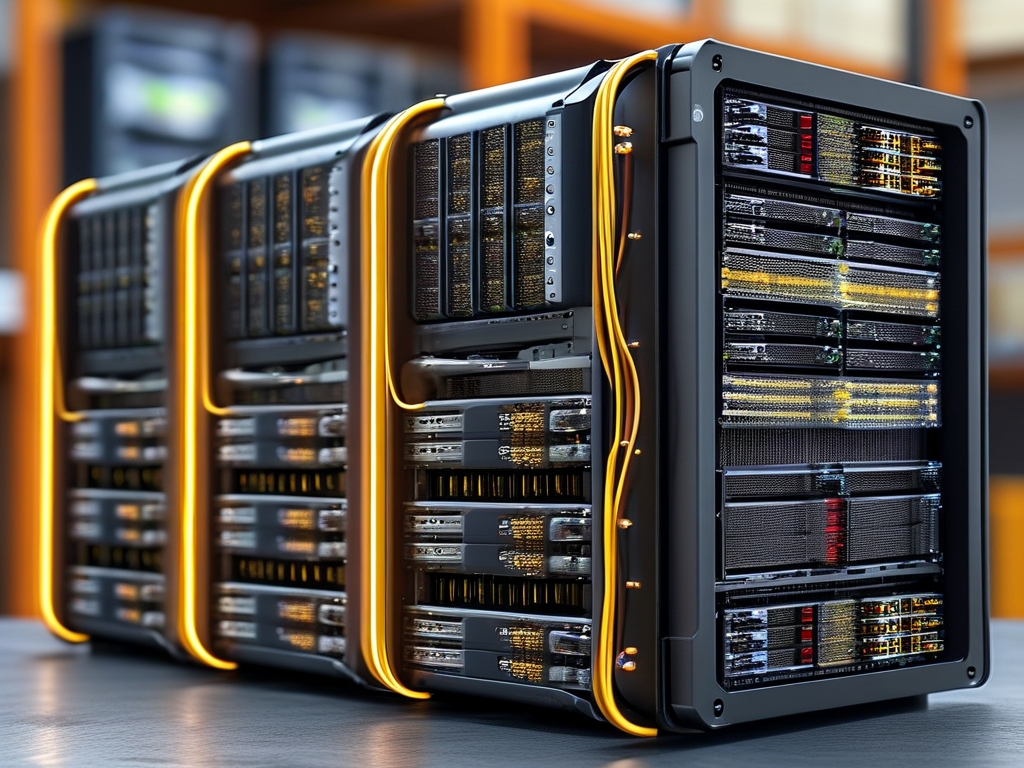The rise of ARM-based servers in enterprise computing has opened new possibilities for building energy-efficient and cost-effective distributed storage solutions. With cloud providers like AWS Graviton and Ampere Altra processors gaining traction, organizations are increasingly exploring how to leverage ARM architecture for scalable storage infrastructure. This article explores the technical considerations, tools, and strategies for implementing distributed storage on ARM servers.
1. Why ARM for Distributed Storage?
ARM processors offer unique advantages for distributed storage systems:
- Energy Efficiency: ARM chips consume significantly less power compared to x86 counterparts, reducing operational costs in large-scale deployments.
- Scalability: ARM's modular design supports dense server configurations, enabling horizontal scaling of storage nodes.
- Cost-Effectiveness: Lower hardware costs make ARM clusters attractive for budget-conscious projects.
- Parallel Processing: Many ARM CPUs feature high core counts, ideal for distributed storage workloads requiring concurrent I/O operations.
2. Key Design Considerations
Hardware Selection
Choose ARM servers optimized for storage workloads:

- Multi-Core Processors: Opt for 64-bit ARMv8+ CPUs with 64+ cores (e.g., Ampere Altra Max) to handle parallel data replication and erasure coding.
- NVMe Storage: Use PCIe 4.0/5.0 interfaces for high-throughput NVMe drives to mitigate ARM's traditionally lower single-thread performance.
- Network Interfaces: Deploy 25/100GbE NICs to prevent network bottlenecks during data synchronization.
Software Stack Compatibility
ARM's ecosystem requires careful software evaluation:
- Distributed Storage Frameworks: Verify ARM support for tools like Ceph, GlusterFS, or MinIO. Most modern platforms now provide ARM64 binaries.
- File Systems: Use ARM-optimized file systems such as ext4 (with crc32c acceleration) or ZFS for Linux on ARM.
- Kernel Tuning: Adjust Linux kernel parameters (e.g., I/O scheduler, TCP buffer sizes) for ARM's memory management characteristics.
3. Implementation Strategies
Cluster Architecture
A typical ARM-based distributed storage cluster includes:

- Storage Nodes: ARM servers with JBOD (Just a Bunch of Disks) configurations.
- Metadata Servers: Lightweight ARM nodes for managing file metadata.
- Load Balancers: ARM-compatible solutions like HAProxy for traffic distribution.
Data Distribution Models
- Sharding: Split data across ARM nodes using consistent hashing algorithms.
- Replication: Maintain 3x copies of data across geographically dispersed ARM clusters.
- Erasure Coding: Offload compute-intensive parity calculations to ARM's NEON SIMD engines.
Performance Optimization
- ARM-Specific Compilation: Build storage software with GCC/LLVM flags like
-mcpu=nativeto leverage CPU extensions. - Asynchronous I/O: Use libaio or io_uring frameworks to maximize ARM's parallel processing capabilities.
- Memory Caching: Allocate ample RAM for read/write buffers to compensate for ARM's lower per-core performance.
4. Case Study: Ceph on ARM Clusters
A real-world deployment using Ceph:
- Hardware: 20-node cluster with Ampere Altra Q80-30 CPUs (80 cores/node), 32TB NVMe per node.
- Configuration:
- CRUSH map tuned for ARM NUMA topology
- Bluestore backend with RocksDB metadata on Optane drives
- RDMA over Converged Ethernet (RoCE) for network transport
- Results:
- 12% lower power consumption vs. equivalent x86 cluster
- 580 MB/s sustained write throughput per OSD
- Sub-millisecond latency for small-object operations
5. Challenges and Solutions
Challenge 1: Limited ARM-Optimized Storage Drivers
Solution: Collaborate with hardware vendors to develop custom kernel modules for NVMe controllers.
Challenge 2: Erasure Coding Overhead
Solution: Utilize ARM's SVE2 vector instructions through ISA-l crypto acceleration library.
Challenge 3: Mixed Architecture Clusters
Solution: Deploy containerized storage services (e.g., Rook Ceph) with multi-arch Docker images.
6. Future Trends
- Chiplet-Based ARM Designs: Modular processors enabling customizable storage accelerators.
- DPU Integration: Offload storage networking tasks to ARM-based Data Processing Units.
- Edge Storage: Deploying ARM microclusters for distributed edge storage with 5G connectivity.
Building distributed storage on ARM servers requires careful hardware selection, software adaptation, and performance tuning. While challenges like ecosystem maturity persist, the combination of ARM's energy efficiency and modern distributed storage algorithms creates compelling opportunities. As the ARM server market grows to 25% of datacenter CPUs by 2025 (IDC forecast), organizations adopting ARM-based storage today position themselves for scalable, sustainable data management in the multi-cloud era.
Key takeaways include prioritizing multi-core ARM processors, leveraging RDMA networking, and using orchestration tools like Kubernetes for automated storage management. With proper design, ARM clusters can deliver enterprise-grade storage performance at reduced TCO, making them viable for hyperscale object storage, AI training datasets, and IoT data lakes.

